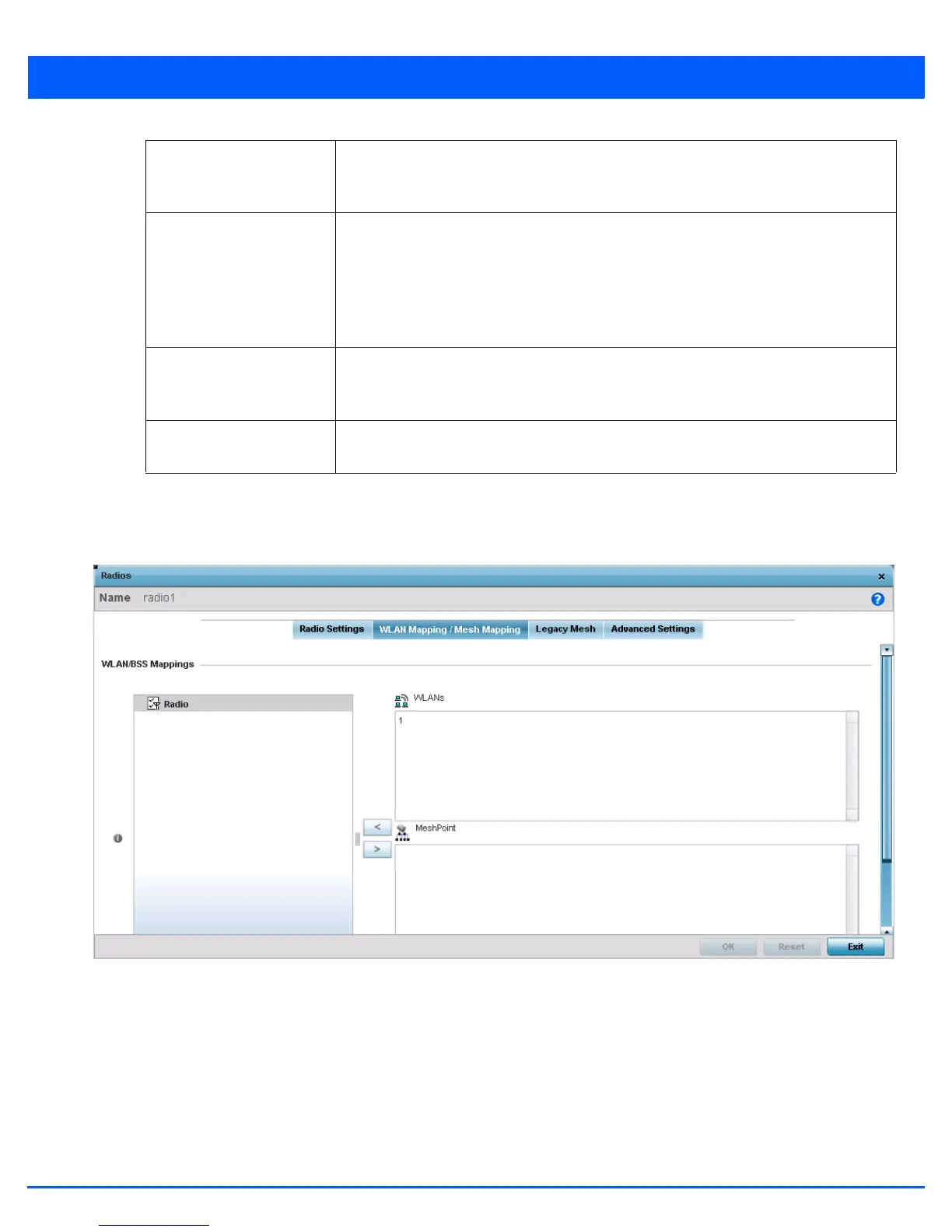Device Configuration 5 - 53
10. Use the Feed WLAN Packets to Sensor drop-down menu to radio’s tap mode of operation. Options include, Off, Inline
and Promiscuous. The default setting is Off.
11. Select the WLAN Mapping/Mesh Mapping tab.
Figure 5-33 Access Point Radio - WLAN Mapping tab
12. Refer to the WLAN Mapping/Mesh Mapping field to set WLAN BSSID assignments for an existing access point
deployment.
Administrators can assign each WLAN its own BSSID. If using a single-radio access point, there are 8 BSSIDs available. If
using a dual-radio access point there are 8 BSSIDs for the 802.11b/g/n radio and 8 BSSIDs for the 802.11a/n radio.
Each supported access point model can support up to 8 BSS IDs.
13. Select Advanced Mapping to list all the available BSSIDs for the radio.
14. Select Create New WLAN to open a dialog where a new WLAN are created.
Short Preamble If using an 802.11bg radio, select this option for the radio to transmit using a short
preamble. Short preambles improve throughput. However, some devices (SpectraLink
phones) require long preambles. The default value is disabled.
Guard Interval Use the drop-down menu to specify a Long or Any guard interval. The guard interval is the
space between symbols (characters) being transmitted. The guard interval is there to
eliminate inter-symbol interference (ISI). ISI occurs when echoes or reflections from one
symbol interfere with another symbol. Adding time between transmissions allows echo's
and reflections to settle before the next symbol is transmitted. A shorter guard interval
reduces overhead and increases data rates by up to 10%.The default value is Long.
Probe Response Rate Use the drop-down menu to specify the data transmission rate used for the transmission
of probe responses. Options include, highest-basic, lowest-basic and follow-probe-
request (default setting).
Probe Response Retry Select this option to retry probe responses if they are not acknowledged by the target
wireless client. The default value is enabled.

